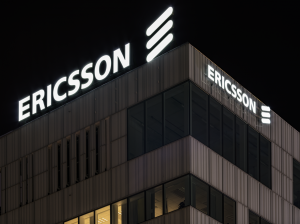
After more than 40 years of operation, DTVE is closing its doors and our website will no longer be updated daily. Thank you for all of your support.
NAB: Ericsson highlights interdependence of telecoms and TV
 Ericsson has used NAB to highlight the growing interdependence of TV and telecoms – despite a strategic review that may result in the sale of all or part of its media arm.
Ericsson has used NAB to highlight the growing interdependence of TV and telecoms – despite a strategic review that may result in the sale of all or part of its media arm.
Ericsson also used the show to announce a new agreement with technology outfit Inspur to deliver TV services in China, as well as the launch of a new recommendation system.
Speaking at a press briefing in Las Vegas ahead of the NAB Show, Kris Hardiman, head of product marketing, media at the Swedish-based technology company, said that Ericsson was trying to bring its wider portfolio of telecom capabilities to bear on television, using cloud technologies to bring a more personalised experience to TV.
He said that Ericsson’s IP cloud core was central to this. “By and large our clients are embracing the cloud – it’s now a question of when and how rather than if,” he said.
Hardiman noted that media groups are increasingly “data-led”, from commissioning content to enabling delivery. He said that differentiation of media services is increasingly related to the move to mobile, collaboration, the user experience – including virtual and augmented reality – and integration of video with the smart home and “the connected environment”.
Speaking about Ericsson’s plans for a strategic review into the future of the media division, Hardiman declined to confirm that this ultimately means the TV business will be sold off. “Ericsson has made some statements about a new more focused business strategy,” he said. “We are looking at strategic opportunities for the media business, and right now that means exactly that.”
Elisabetta Romano, VP and head of media solutions, also speaking at the press briefing, said that Ericsson’s “transformation of [its] TV” strategy would be enabled by software, the cloud and data.
Ericsson’s delivery solutions are primarily based on its Mediafirst platform. Romano said that Ericsson is focused on the cloud-based next generation TV app bringing together in-home and TV services.
“This has tools that will allow TV providers to compete with web players,” she said, adding that the concept is to “leverage video as the anchor into the home”.
Integration of TV distribution with smart home technologies is a key area for the company, she said.
Ericsson also used NAB to highlight stream-personalisation. “This allows dynamic ad insertion, working on end-user sessions and changing on-the-fly content targeting specific end users,” said Romano.
She said that in addition to targeted advertising, an important aspect of Ericsson’s vision is integration with any other partner ecosystem – such as Google or Netflix – to enable pay TV customers to incorporate their services as part of their overall offering.
At the show, Ericsson announced a new partnership with local technology provider Inspur to deploy pay TV services in China.
Inspur will provide set tops and servers and the first service provider client is Shandong Cable. The new service will deliver live and on-demand TV content to 20 million subscribers in 17 cities across the Shandong Province.
Ericsson also launched a new recommendation system, bringing together TV and movie data sources with analytics capability. It said that this would bring together data sets including images and poster art, clips and trailers, ratings, cast and crew information, series and episodic data. It will also offer a package of applications including recommendations, universal search, deep linking, rights management and analytics to enable personalised viewing experiences.
Thorsten Sauer, VP and head of broadcast and media services, said that current implementations of content discovery is very complex. “We want to make it much faster to the market by establishing an ecosystem,” he said.
Sauer said that Ericsson is working with partners to bring recommendation capabilities to market and integrate them with the data Ericsson already has.
He added that speech recognition is becoming more important, not only as a way to enable recommendation but, in the future, as something that could enable in the future, voice triggered control of the smart home.


